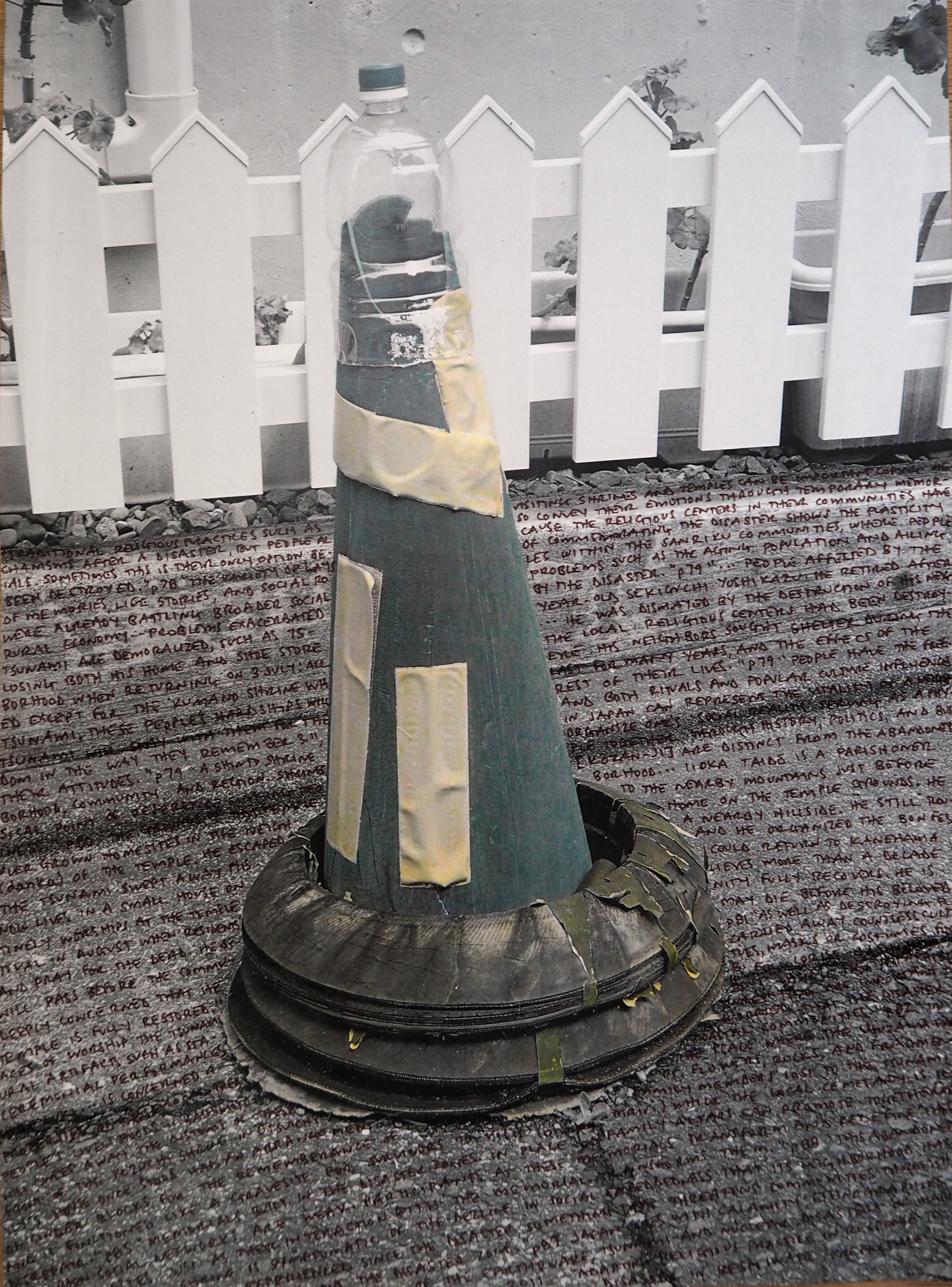Memorials & Shrines
記念碑 と 神社
記念碑 と 神社

Shinto Rituals Transcend the Generations & Boundaries
International Shinto Foundation
2002
International Shinto Foundation
2002
There are some problems with spirits of dead people who died a violent and death. These spirits,
怨霊 , angry or vengeful spirits, need special treatment to not hurt humans with their behavior.
---
Traditional Japanese cosmology divided the world between a vertical and horizontal axis of seen and unseen realms.---
Tree worship, where
標縄/注連縄/七五三縄,
the enclosing rope,
around the trunk indicates that tree is apt to receive
神 , a kami, and should be treated with great respect and kindness...but the kami is not there all the time.---
Ritual is a kind of spiritual commerce...most people thought that kagura is danced to gain results, either to prevent disaster or to ensure a good harvest.---
稲荷大神, inari, is a different
神 ,kami, to each devotee, shaped by what each person brings of his own character, how they understand the world.
Japan Copes With Calamity: Ethnographies of the Earthqauke, Tsunami, & Nuclear Disasters, March, 2011
Tom Gill, Brigitte Seger, & David Slater, Editors
2013
Tom Gill, Brigitte Seger, & David Slater, Editors
2013
A shinto shrine can represent the vitality of a neighborhood, community and region. Shrines organize one’s ‘social reality’...linking people together through history, politics and business.
---
Traditional religious practices such as visiting shrines and temples can be important coping mechanisms after a disaster, but people also convey their emotions through temporary memorials.---
The memorials in the disaster area, whether influenced by buddhism or shinto, were temporary structures built out of spiritual need.---
The variety of ways of commemorating the disaster shows the plasticity of memories, life stories, and social roles within communities.

Japan Copes With Calamity: Ethnographies of the Earthqauke, Tsunami, & Nuclear Disasters of March, 2011
Tom Gill, Brigitte Seger, & David Slater, Editors
2013
Tom Gill, Brigitte Seger, & David Slater, Editors
2013
The disappearance of kinship networks in devasted communities puts family shrines at risk of being demolished...
---
An ‘idiosyncratic shrine’, ‘koseiteki-na jinja’, lost its sacredness after the death and displacement of the families that once worshipped there, suggesting that both physical and spiritual pollution block where the shrine is located. ---
This shrine was nameless because tsunami damage was considered to have made it impure for the deity to inhabit.---
In Japanese folklore, kami, or sacred spirits can be viewed as sacred strangers who periodically visit humans but might leave if pollution is a threat.
---
Ritsuko believes the residing ‘kami’
(spirits) left the shrine, just as her family left the neighborhood after the tsunami.
Japan Copes With Calamity: Ethnographies of the Earthqauke, Tsunami, & Nuclear Disasters of March, 2011
Tom Gill, Brigitte Seger, & David Slater, Editors
2013
Tom Gill, Brigitte Seger, & David Slater, Editors
2013
Six cinder blocks formed the entire structure of the altar built on the destroyed homesite. The house was gone but the sacredness of the interior was still acknowledged.
---
Before the tsunami, his wife Emiko left the building of the fishing cooperative to take their grandson home from elementary school. They were swept away by the tsunami, a block away from the schoolyard.---
His plan was to place offerings at this site along the road on the eleventh day of each month and during shogatsu for the first year after the disaster. His roadside memorial has been a welcome presence in the neighborhood and others sometimes added their own offerings alongside his.---
He believes that more than a decade will pass before the community fully recovers. He is deeply concerned he may die before his beloved temple is fully restored.